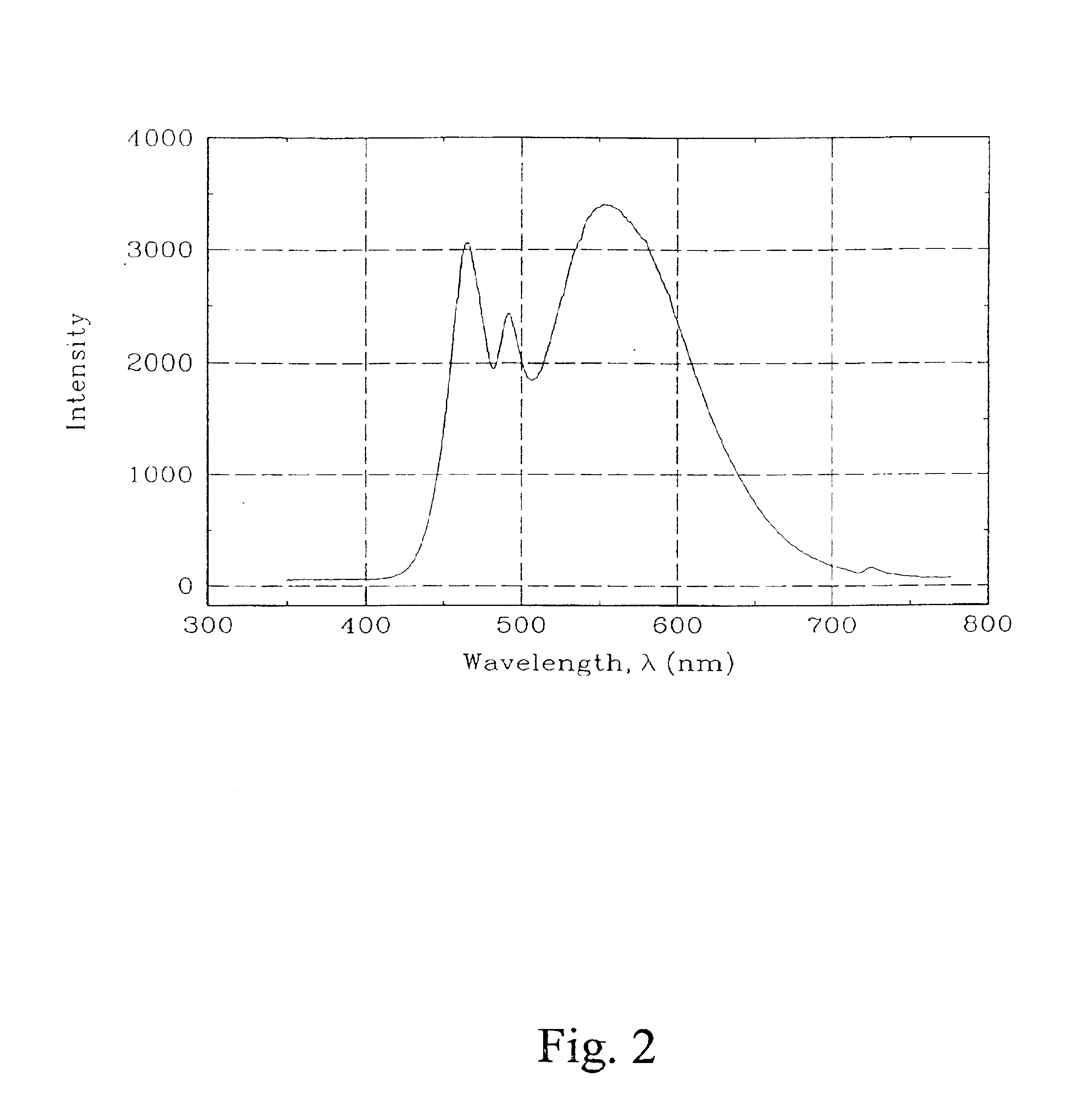Fiber optic sensor system and method for measuring the pressure of media
a fiber optic sensor and pressure sensor technology, applied in the field of pressure sensing, can solve the problems of huge system cost and weight, impediment to non-optical pressure sensors, so as to prevent contamination of sensing media, minimize or eliminate problems
- Summary
- Abstract
- Description
- Claims
- Application Information
AI Technical Summary
Benefits of technology
Problems solved by technology
Method used
Image
Examples
Embodiment Construction
FIG. 1 shows a block diagram illustrating the overall operation of the hardware and software of the system in accordance with a preferred embodiment. Light, generated by a light emitting diode (LED) 100 and under the control of a LED driver system 101, is launched into one arm of a −3 dB single mode optical coupler (SMOC) 102. Correct operation of the system has been demonstrated using a white light LED (spectra provided in FIG. 2), a wide-band LED centered at 740 nm with a full-wave-half-maximum (FWHM) of 35 nm, and a super-luminescent LED (SLED) centered at 850 nm with a FWHM of 21 nm. The light energy, after traveling through the coupler 102, is attenuated by 3 dB and is sent simultaneously to a power monitoring photodiode 103 and to a fiber optic pressure sensor 104. The energy that falls upon the power monitoring photodiode 103 is used to regulate and stabilize the LED driver 101 current so that intensity fluctuations are kept to a minimum. The energy that travels to the fiber ...
PUM
 Login to View More
Login to View More Abstract
Description
Claims
Application Information
 Login to View More
Login to View More - R&D
- Intellectual Property
- Life Sciences
- Materials
- Tech Scout
- Unparalleled Data Quality
- Higher Quality Content
- 60% Fewer Hallucinations
Browse by: Latest US Patents, China's latest patents, Technical Efficacy Thesaurus, Application Domain, Technology Topic, Popular Technical Reports.
© 2025 PatSnap. All rights reserved.Legal|Privacy policy|Modern Slavery Act Transparency Statement|Sitemap|About US| Contact US: help@patsnap.com



